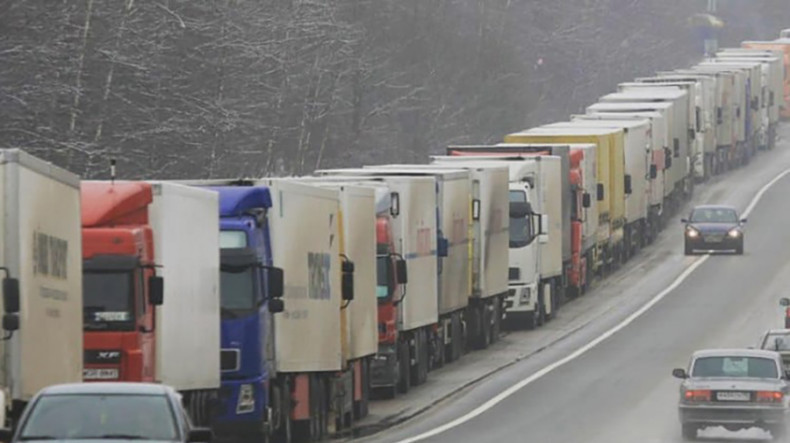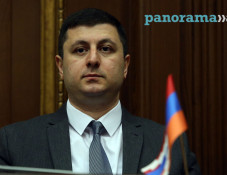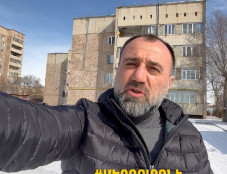
There is an alternative to Upper Lars, but no one would do anything about it
Long queues persist at the Upper Lars crossing on the Russian-Georgian border, which serves as Armenia’s sole overland trade route to Russia. For almost a month, trucks of Armenian exporting companies have been stranded on the road to the Upper Lars checkpoint, unable to cross the border to Russia. This time the problem is not because of bad weather conditions.
After the explosion on the Crimean bridge, Russia has tightened control over cargo shipments. Trucking companies say that all vehicles are being scrutinized, resulting in kilometer-long queues. As a result, truckers, exporters and importers suffer huge losses.
Some of the exporters have recalled vehicles back to Armenia so that the goods do not spoil, but there are also many cases where tons of cargo are dumped in landfills after their return.
The problem is being raised, but no solution is in place. The head of the Armenian Association of Transport Forwarders, Yeghishe Hovhannisyan, claims there are no professionals capable of tackling the problem.
Speaking to Panorama.am on Tuesday, Hovhannisyan pointed to recurring problems with the Upper Lars crossing, saying goods are sometimes stuck on the road for 15-20 days.
“When we apply to the Ministry of Economy, they tell us to reach the Ministry of Territorial Administration and Infrastructure, while the latter says they can do nothing about it. Now the question arises about who can do anything?” Hovhannisyan says.
He says the problem is with the low capacity of the Upper Lars border crossing, while efforts to increase the number of checkpoints do not help settle the issue.
"This road has nowhere to go. The opportunities are small, so we can't demand anything more. One day it may be good, the other day it may be bad," the chairman said.
According to him, the Armenian freight forwarders can only use this route because of the “incompetence and unprofessional approach” of the competent authorities. He says they have been talking about an alternative trade route to Russia for many years, stressing the need to use the Iranian route. Moreover, they claim that Armenia should have its own ferry, however all this remains on paper.
In Hovhannisyan’s words, a railway ferry can also be an alternative, which will help ease the load at the Upper Lars checkpoint.
"If these two issues are resolved, the situation will be made simpler, as part of the cargo can be transported by ferry, while another part through Iran. Besides, Armenia should have its own ferry, which should not be used for commercial purposes. In other words, it should not be owned by some businessman, but be a state property and operated by a team of professionals. We have put forward this idea, but no one seems to be interested in it," Hovhannisyan noted.
He also said that logistics have become more expensive, accounting for 30-40% of the total costs of goods.
He claims no government agency wants to deal with the issue. "It is not necessary to have a ministry of transport, but there should be a regulatory body, which we do not have. I myself do not know who to turn to in case of problems, as there are no professionals. Yes, these are problems that have been piling up for years, but should they eventually be solved or not?” Hovhannisyan said.
"There is no state agency dealing with transport logistics, which is the most important problem. People don't realize the impact it has on the economy. We're at a standstill now. This problem also stems from the fact that in our universities the word "logistics" is misunderstood. Although they have begun to teach logistics at two universities, the level and approaches are so primitive that we should not expect anything. This profession is the most demanded abroad, because if you don't know logistics in conditions of globalization, you won't succeed,” he stated.
Earlier in spring this year, freight forwarders once again found themselves in a difficult situation amid the Russian-Ukrainian conflict. Particularly, traffic flows through the Upper Lars checkpoint surged, causing kilometer-long queues. At that time, back in March, the government decided to launch a ferry transportation. More than seven months have passed, but there is no ferry service yet.
Minister of Economy Vahan Kerobyan announced several times during this period the timeframes for the launch of a ferry service. He even talked about the release of timetables, but it is not in sight. Meanwhile, cargo forwarders and exporters are anxiously waiting for the road to close again in winter, when they will be left again at the broken trough.
Related news
Newsfeed
Videos






























